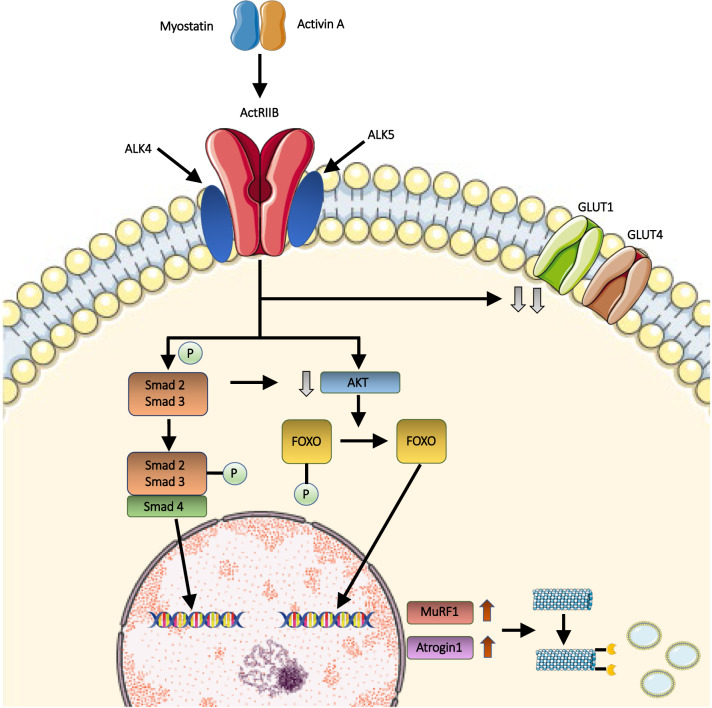Fig. 2.
Myostatin muscle pathway. The binding of myostatin or, alternatively, activin, to muscle activin receptor type IIB (ActRIIB) results in its dimerization and, subsequently, in the activation of type I activin receptor transmembrane kinases ALK4 or ALK5. Consequently, the Smad2/Smad3 complex is phosphorylated, and the Smad4 component is recruited. The Smad complex enters the nucleus, where it acts as transcriptional activator of downstream genes involved in muscle wasting. Furthermore, the activation of the transmembrane activin receptor leads to the downregulation of AKT, which is involved in FOXO phosphorylation. Dephosphorylated FOXO translocates into the nucleus, and up-regulates the transcription of MuRF1 and Atrogin1. Muscle proteins, which are ubiquitinated by MuRF1 and Atrogin1, are subsequently catabolized by proteasomes, thus resulting in muscle atrophy. Simultaneously, myostatin is involved in glucose homeostasis regulation, likely by reducing the protein levels of glucose transporter 1 (GLUT1) and 4 (GLUT4)

